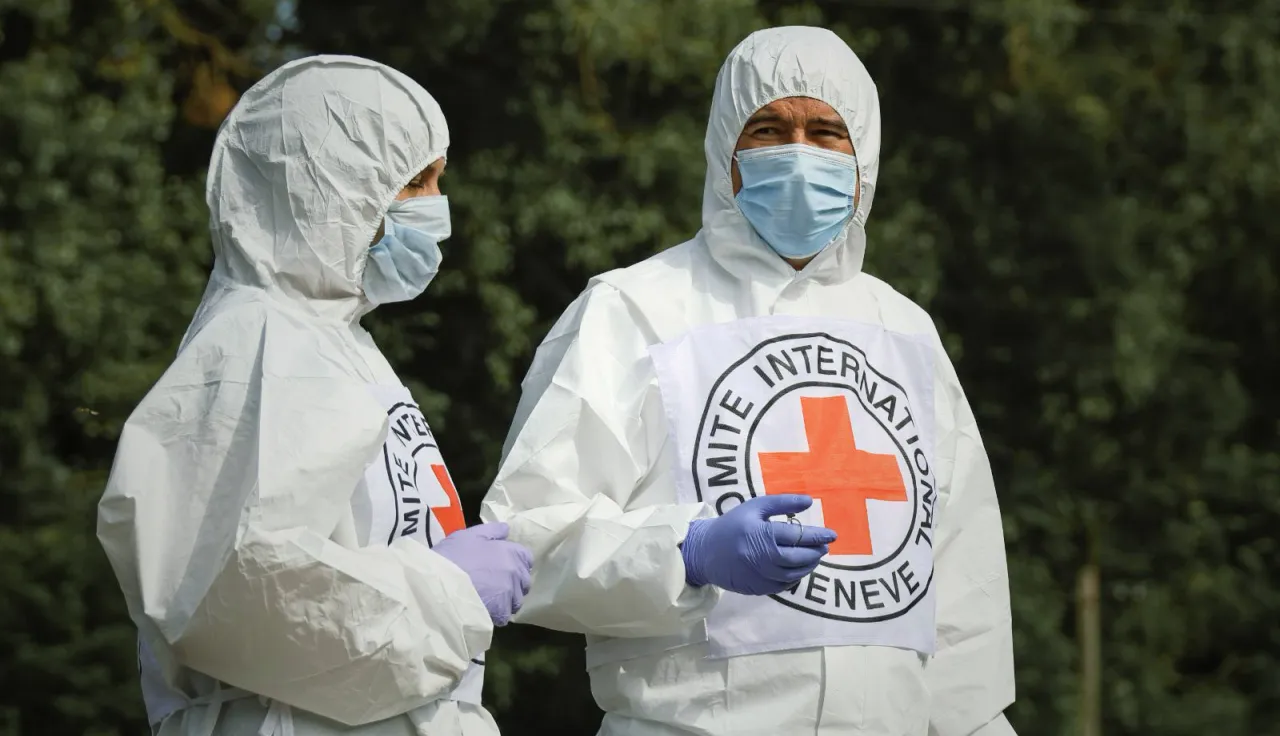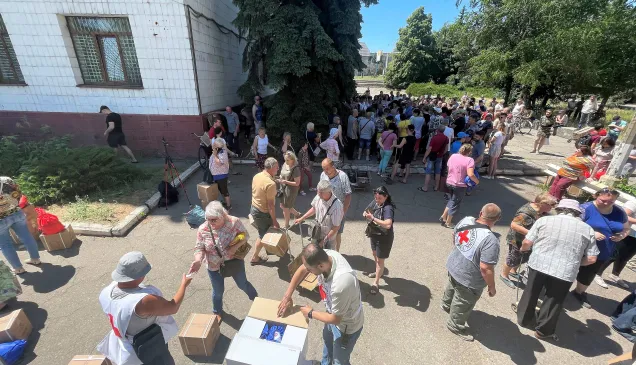ICRC voices: Dignity for the Dead in Ukraine

In a series of online articles, the ICRC team in London interviews British and Irish delegates working across the world. This month, Niamh Smith, an Irish forensic specialist, speaks about her work in Odesa, Ukraine. After 21 years with the homicide unit at the London Metropolitan Police and several deployments for Interpol and other international agencies in Libya and Nepal, Niamh joined the ICRC in 2022. Since 2024, she has been working to support the identification of human remains and helping facilitate their repatriation.
Whether it’s a victim of a crime or someone killed in conflict, you’re faced with a human being who can no longer speak for themselves. They can’t tell you what happened. They can’t tell you who they are. It’s up to us to look after them and bring that person home to their family.
Seeing human remains as people – not just bodies – is at the very heart of forensics. It’s about protecting someone’s dignity in death. As a forensic specialist, my job is to help ensure that the dead are handled with the utmost respect.
From the ICRC office in Odesa, in southern Ukraine, the team and I support authorities to trace and identify people who’ve been killed as a result of the conflict and to observe the repatriation of human remains between Russia and Ukraine. It’s a huge undertaking.
As of October, the ICRC is seeking to clarify the fate of 174,200 people. This doesn’t correspond with the total number of missing people, since not all cases are reported to the ICRC. They're mainly military, and from both sides of the frontline. Many of those still unaccounted for may have lost their lives, but their remains might not have been recovered, identified or repatriated.
Tweet: https://twitter.com/ICRC_uk/status/1987850644858802216?s=20
Recovering and identifying the fallen
The forensic team and I offer advice, training, equipment, and hundreds of thousands of DNA sample collection kits to support this vital work. But the scale of the tragedy is enormous. I arrived in Ukraine in February 2024, and since then, the flow of casualties hasn’t stopped. If the fighting continues at this pace, the backlog of remains to be identified will continue to grow. Even when the armed conflict finally ends, recovering and identifying human remains scattered across battlefields and destroyed villages will take years.
Ukrainian forensic institutions use different techniques to identify human remains, including DNA testing. But the process doesn’t start in a lab – it begins in the field, at the very place that person is found. In Ukraine, the actual recovery of human remains is handled by Ukrainian authorities, not the ICRC. Every detail is carefully photographed and documented: the recovery site, the clothing, the personal belongings found with them. Whether it’s a driver’s license tucked in a back pocket, a badge, ID card, or dog tag, losing a crucial piece of evidence could mean losing the chance to identify that person.
They also take samples from bones and teeth to extract DNA, which is tested and uploaded to a database. The State Scientific Research Forensic Centre (SSRFC) then crosschecks this against DNA from families searching for confirmations and a return of the body of their loved one for burial. The success rate is good, but each match is bittersweet. It might be an answer for a grieving family, but it’s never the answer they hope for.
I have every respect for the forensic institutions here, who are doing extraordinary work under unimaginable circumstances. But no country in the world could easily deal with this scale of human loss.

Left: Forensic training in Dnipro, using plastic skeletons.
Right: DNA samples being extracted by a forensic specialist at a lab run by the State Scientific Research Forensic Centre (SSRFC).
A line of flowers along the road
We also support the repatriation of fallen military personnel between Russia and Ukraine, at their request, as neutral participants. Simply put, we’re there to observe and encourage that the transfer of human remains is conducted with dignity and respect. Since 2022, there’s been more than 50 of these repatriations, each involving the exchange of hundreds, sometimes thousands, of human remains.
Under the Geneva Conventions, parties to an armed conflict are legally obligated to search for, collect and evacuate the dead – regardless of which side they fought for. That might sound like an abstract legal concept but seeing it in action during my first repatriation mission left a lasting impression on me. It was a deeply moving reminder that, beyond laws and rules, this is about honouring human lives.
Tweet: https://twitter.com/ICRC_uk/status/1989268826513649949?s=20
Last year, I took part in my first repatriation. At that time, we’d have to travel through several small villages to reach the border. Although it was my first time doing this, the route itself was well used, and the villagers came to recognise the convoy: military vehicles, big white lorries to hold the dead, and our cars in the middle of the column with the red cross emblazoned on the bonnet. They understood what the convoy meant - we were returning fallen soldiers.
On the return journey, after collecting the remains at the border, we passed back through those same villages. This time, everyone had come out of their homes to watch us pass. Old men and women, young children, they knelt and lined the road, weeping, tossing flowers under the wheels of the white trucks as we drove by. They didn’t know who we were transporting. They only knew the dead were theirs – men who’d gone to fight and were now coming home.
In 31 years of forensics, working on everything from homicide investigations with the police to mass graves in Libya, I’ve never cried. But seeing this outpouring of collective, visceral grief brought a lump to my throat. You could sense their pain. Often in the UK, death feels so far away because we play video games and watch movies and TV shows that show people dying all the time. But in that moment, war was no longer abstract – it had a terrible human cost.



